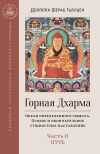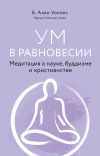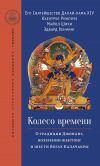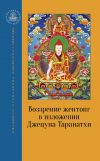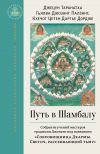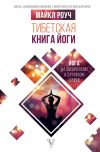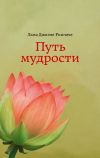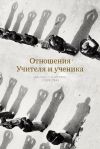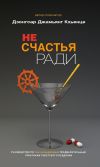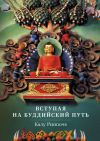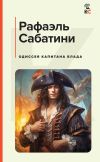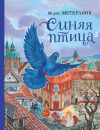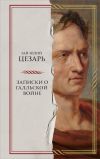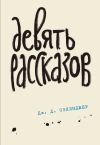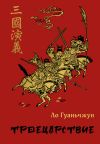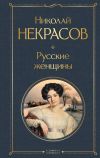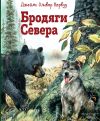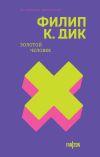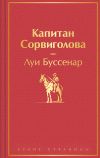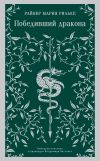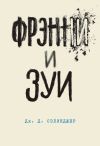
Автор книги: Сайрус Стирнс
Жанр: Религия: прочее, Религия
Возрастные ограничения: +16
сообщить о неприемлемом содержимом
Текущая страница: 21 (всего у книги 22 страниц)
Hirsch, Edward. In the Beginning: A New Translation of the Hebrew Bible Offers a Text for the Ear as Well as the Eye. The New York Times Book Review, December 24: 5–6, 1995.
Hofinger, Marcel. Etude sur La concile de Vaiśalī. Louvain: Bureaux du Muséon, 1946.
Hookham, S. K. The Buddha Within: Tathāgatagarbha Doctrine According to the Shentong Interpretation of the Ratnagotravibhāga. Albany: State University of New York Press, 1991.
Iida, Shotaro. Reason and Emptiness. Tokyo: Hokuseido Press, 1980.
Jackson, David. The Early Abbots of ’Phan-po Na-lendra: The Vicissitudes of a Great Tibetan Monastery in the 15th Century. Vienna: Arbeitskreis für Tibetische und Buddhistische Studien, Universität Wien, 1989.
Jackson, David. The «Miscellaneous Series» of Tibetan Texts in the Bihar Research Society, Patna: A Handlist. Stuttgart: Franz Steiner Verlag Wiebaden GmbH, 1989.
Jackson, David. Enlightenment by a Single Means. Vienna: Osterreichische Akademie der Wissenschaften, 1994.
Jackson, David. A History of Tibetan Painting. Vienna: Osterreichische Akademie der Wissenschaften, 1996.
Jackson, David. Patron and Painter: Situ Panchen and the Revival of the Encampment Style. New York: Rubin Museum of Art, 2009.
Jacobi, H. Ages of the World (Indian). In The Encyclopedia of Religion and Ethics, ed. James Hastings, vol. 1: 200–202. New York: Charles Scribner's Sons, 1908.
Kapstein, Matthew. New Sources for Tibetan Buddhist History: China Exchange News, 19, nos. 3 and 4 (Fall/Winter): 15–19, 1991.
Kapstein, Matthew. The ’Dzam-thang Edition of the Collected Works of Kun-mkhyen Dol-po-pa Shes-rab rgyal-mtshan: Introduction and Catalogue. Delhi: Shedrup Books, 1992.
Kapstein, Matthew. The illusion of Spiritual Progress. In Paths to Liberation: The Marga and Its Transformations in Buddhist Thought, ed. Robert E. Buswell, Jr. and Robert M. Gimello, 193–224. Honolulu: University of Hawaii Press, 1992.
Kapstein, Matthew. Remarks on the Maṇi bKa’-’bum and the Cult of Avalokiteśvara in Tibet. In Tibetan Buddhism: Reason and Revelation, ed. Steven D: Goodman and Ronald M. Davidson, 79–94. Albany: State University of New York Press, 1992.
Kapstein, Matthew. gDams ngag: Tibetan Technologies of the Self. In Tibetan Literature, ed., José Cabezón and Roger Jackson, 275–289. Ithaca: Snow Lion Publications, 1996.
Kapstein, Matthew. The Tibetan Assimilation of Buddhism: Conversion, Contestation, and Memory. New York: Oxford University Press, 2000.
Kapstein, Matthew (n.d.). From Kun-mkhyen Dol-po-pa to ’Ba’-mda’ Dge-legs: Three Jo-nang-pa Masters on the Interpretation of the Prajñāpāramitā. Forthcoming in The Proceedings of the 1995 Meeting of the International Association of Tibetan Studies, ed. Ernst Steinkellner.
Katz, Nathan. Tibetan Hermeneutics and the Yāna Controversy. In Contribution on Tibetan and Buddhist Religion and Philosophy, ed. E. Steinkellner and H. Tauscher, vol. 2: 107–130. Vienna: Arbeitskreis für Tibetische und Buddhistische Studien, 1983.
Khedrup Norsang Gyatso. Ornament of Stainless Light: An Exposition of the Kalacakra Tantra. Translated by Gavin Kilty. Boston: Wisdom Publications, 2004.
Kochumuttom, Thomas. A Buddhist Doctrine of Experience. Delhi: Motilal Banarsidass, 1982.
Komarovski, Y. trans. Three Texts on Madhyamaka by Shakya Chokden. Dharamsala: Library of Tibetan Works and Archives, 2000.
Komarovski, Y. Reburying the treasure-maintaining the continuity: Two texts by Śakya Mchog Ldan on the Buddha-essence. Journal of Indian Philosophy 34: 521–570, 2006.
Komarovski, Y. Echoes of Empty Luminosity: Reevaluation and Unique Interpretation of Yogācāra and Niḥsvabhāvavāda Madhyamaka by the Fifteenth Century Tibetan Thinker Śakya mchog ldan. Ph. D. dissertation, University of Virginia, 2007.
Kongtrul, Jamgön. The Autobiography of Jamgon Kongtrul: A Gem of Many Colors. Translated by Richard Barron. Ithaca: Snow Lion Publications, 2003.
Kongtrul, Jamgön. The Treasury of Knowledge: Book Six, Part Four: Systems of Buddhist Tantra. Translated by Elio Guarisco and Ingrid McLeod, Kalu Rinpoche Translation Group. Ithaca: Snow Lion Publications, 2005.
Kongtrul, Jamgön. The Treasury of Knowledge: Book Six, Part Three: Frameworks of Buddhist Philosophy. Translated by Elizabeth Callahan, Kalu Rinpoche Translation Group. Ithaca: Snow Lion Publications, 2007.
Kongtrul, Jamgön. The Treasury of Knowledge: Book Eight, Part Four: Esoteric Instructions. Translated by Sarah Harding, Kalu Rinpoche Translation Group. Ithaca: Snow Lion Publications, 2007.
Köppl, Heidi I. Establishing Appearances as Divine: Rongzom Chözang on Reasoning, Madhyamaka, and Purity. Ithaca: Snow Lion Publications, 2008.
van der Kuijp, Leonard. On the Life and Political Career of Ta’i-si-tu Byang-chub rgyal-mtshan (1302–?1364). In Tibetan History and Language, ed. Ernst Steinkellner, 277–327. Vienna: Arbeitskreis für Tibetische und Buddhistische Studien, Universität Wien, 1988.
van der Kuijp, Leonard. Fourteenth Century Tibetan Cultural History III: The Oeuvre of Bla ma dam pa Bsod nams rgyal mtshan (1312–1375), Part One. Berliner Indologische Studien 7: 109–147, 1993.
van der Kuijp, Leonard. Jambhala: An Imperial Envoy to Tibet During the Late Yuan. Journal of the American Oriental Society 113: 529–538, 1993.
van der Kuijp, Leonard. Fourteenth Century Tibetan Cultural History I: Ta’i-si-tu Byang-chub rgyal-mtshan as a Man of Religion. Indo-Iranian journal 37: 139–149, 1994.
van der Kuijp, Leonard. On the Lives of Śakyaśrībhadra (?–1225?). Journal of the American Oriental Society 114: 599–616, 1994.
Lamotte, Etienne. History of Indian Buddhism: From the Origins to the Saka Era. Trans. Sara Webb-Born. Louvain: Institut Orientaliste, 1988.
La Vallée Poussin, Louis de. Ages of the World (Buddhist). In The Encyclopedia of Religion and Ethics, ed. James Hastings, vol. 12: 187–190. New York: Charles Scribner's Sons, 1908.
Lopez, Donald. Polemical Literature (dGag lan). In Tibetan Literature, ed. José Cabezón and Roger Jackson, 217–228. Ithaca: Snow Lion Publications, 1996.
Mathes, Klaus-Dieter. Taranatha's 'Twenty-one Differences with regard to the Profound Meaning' – Comparing the Views of the Two Gzhan stong Masters Dol po pa and Śakya mchog ldan. Journal of the International Association of Buddhist Studies, vol. 27: 285–328, 2004.
Mathes, Klaus-Dieter. A Direct Path to the Buddha Within: Gö Lotsāwa's Mahāmudrā Interpretation of the Ratnagotravibhāga. Boston: Wisdom Publications, 2008.
Montaigne, Michel de. The Essays of Michel de Montaigne. Trans. M. A. Screech. London: Penguin Press, 1993.
Nagao, Gadjin. Mādhyamika and Yogācāra. Trans. Leslie Kawamura. Albany: State University of New York Press, 1991.
Need, David. Review of The Buddha Within: Tathāgatagarbha Doctrine According to the Shentong Interpretation of the Ratnagotravibhāga, by S. K. Hookham. Philosophy East and West 43: 585–588, 1993.
Newman, John. A Brief History of the Kalachakra. In The Wheel of Time: The Kalachakra in Context, ed. Geshe Lhundub Sopa, Roger Jackson, and John Newman, 51–90. Madison: Deer Park Books, 1985.
Newman, John. The Outer Wheel of Time: Vajrayāna Buddhist Cosmology in the Kālacakra Tantra. Ph. D. dissertation, University of Wisconsin, 1985.
Newman, John. Buddhist Sanskrit in the Kālacakra Tantra. Journal of the International Association of Buddhist Studies 11 (1): 123–140, 1988.
Newman, John. Buddhist Siddhānta in the Kālacakra Tantra. Wiener Zeitschrift for die Kunde Sudasiens 36: 227–234, 1992.
Obermiller, E., trans. History of Buddhism. Heidelberg: O. Harrassowitz, 1932.
Obermiller, E. Prajñāpāramita in Tibetan Buddhism. Delhi: Classics India Publications, 1988.
Onada, Shunzo. Monastic Debate in Tibet. Vienna: Arbeitskreis für Tibetische und Buddhistische Studien, Universität Wien, 1992.
Orofino, Giacomella. Divination with Mirrors. Observations on a Simile Found in the Kālacakra Literature. In Tibetan Studies: Proceedings of the 6th Seminar of the International Association for Tibetan Studies, ed. Per Kvaerne, vol. 2: 612–628. Oslo: The Institute for Comparative Research in Human Culture, 1994.
Pal, Pratapaditya. Desire and Devotion: Art from India, Nepal and Tibet in the John and Berthe Ford Collection. New Delhi: Timeless Books, 2001.
Petech, Luciano. Central Tibet and the Mongols. Rome: Istituto Italiano per il Medio ed Estremo Oriente, 1990.
Pettit, John Whitney. Mipham’s Beacon of Certainty Illuminating the View of Dzogchen, the Great Perfection. Boston: Wisdom Publications, 1999.
Pingree, David. Jyotiḥśāstra: Astral and Mathematical Literature. Wiesbaden: Otto Harrassowitz, 1981.
Prebish, Charles. A Review of Scholarship on the Buddhist Councils. Journal of Asian Studies 33: 239–254, 1974.
Rhie, Marylin M., and Robert A. F. Thurman. Wisdom and Compassion: The Sacred Art of Tibet. New York: Henry N. Abrams, 1991.
Rhie, Marylin M., and Robert A. F. Thurman. Worlds of Transformation: Tibetan Art of Wisdom and Compassion. New York: Tibet House, 1999.
Ricca, Franco, and Erberto Lo Bue. The Great Stupa of Gyantse. London: Serindia Publications, 1995.
Roerich, George N., trans. The Blue Annals. Delhi: Motilal Banarsidass, 1976.
Schaeffer, Kurtis. The Enlightened Heart of Buddhahood: A Study and Translation of The Third Karma pa Rang byung rdo rje’s Work on Tathagatagarbha, The Bde bzhin gshegs pa’i snying po gtan la dbab pa. Master’s thesis, University of Washington, 1995.
Schoening, Jeffrey. The Śālistamba Sūtra and its Indian Commentaries. 2 vols. Vienna: Arbeitskreis für Tibetische und Buddhistische Studien, Universität Wien, 1995.
von Schroeder, Ulrich. Buddhist Sculptures in Tibet. 2 vols. Hong Kong: Visual Dharma Publications, 2001.
Schuh, Dieter. Untersuchungen zur Geschichte der tibetischen Kalenderrechnung.Verzeichnis der orientalischen Handschriften in Deutschland, Supplementband 16. Wiesbaden: Franz Steiner, 1973.
Ruegg, David Seyfort. The Jo nang pas: A School of Buddhist Ontologists according to the Grub mtha’ shel gyi me long. Journal of the American Oriental Society 83: 73–91, 1963.
Ruegg, David Seyfort. The Life of Bu ston rin po che. Rome: Istituto Italiano per il Media ed Estremo Oriente, 1966.
Ruegg, David Seyfort. On the Dge lugs pa Theory of the tathāgatagarbha. In Pratidānam, ed. J. C. Heesterman, G. H. Schokker, and V. I. Subramoniam, 500–509. The Hague-Paris: Mouton, 1968.
Ruegg, David Seyfort. La Theorie du Tathāgatagarbha et du Gotra. Paris: Ecole Française d’Extreme-Orient, 1969.
Ruegg, David Seyfort. Le Traité du Tathāgatagarbha de Bu ston Rin chen grub. Paris: Ecole Française d’Extreme-Orient, 1973.
Ruegg, David Seyfort. The Uses of the Four Positions of the Catuṣkoṭi and the Problem of the Description of Reality in Mahayana Buddhism. Journal of Indian Philosophy 5: 1–71, 1977.
Ruegg, David. The Literature of the Madhyamaka School of Philosophy in India. Wiesbaden: Otto Harrassowitz, 1981.
Ruegg, David. Karma Bka' brgyud Work on the Lineages and Traditions of the Indo-Tibetan Dbu ma (Madhyamaka). In Orientalia Iosephi Tucci Memoriae Dicata, ed. G. Gnoli and L. Lanciotti, vol. 3: 1249–1280. Rome: Istituto Italiano per il Medio ed Estremo Oriente, 1988.
Ruegg, David. Buddha Nature, Mind and the Problem of Gradualism in a Comparative Perspective. London: School of Oriental and African Studies, 1989.
Ruegg, David. Notes on Some Indian and Tibetan Reckonings of the Buddha's Nirvāṇa and the Duration of His Teaching. In The Dating of the Historical Buddha/Die Datierung des historischen Buddha, ed. Heinz Bechert, pt. 2: 263–290. Göttingen: Vandenhoeck and Ruprecht, 1992.
Ruegg, David. Some Reflections on the Place of Philosophy in the Study of Buddhism. Journal of the International Association of Buddhist Studies 18 (2): 145–181, 1995.
Shantideva. A Guide to the Bodhisattva's Way of Life. Trans. Stephen Batchelor. Dharamsala: Library of Tibetan Works and Archives, 1979.
Sheehy, Michael R. The Gzhan stong chen mo: A Study of Emptiness According to the Modern Tibetan Buddhist Jonang Scholar ’Dzam thang Mkhan po Ngag dbang Blo gros Grags pa (1920–1975). M. A. thesis, California Institute of Integral Studies, 2007.
Smith, E. Gene. Introduction to The Autobiography and Diaries of Si-tu Paṇ-chen. New Delhi: International Academy of Indian Culture, 1968.
Smith, E. Gene. Introduction to The Autobiography of Paṇ chen Blo-bzang chos-kyi rgyal-mtshan. New Delhi: Ngawang Gelek Demo, 1969.
Smith, E. Gene. Introduction to Kongtrul's Encyclopedia of Indo-Tibetan Culture. Śatapiṭaka Series 90. New Delhi: International Academy of lndian Culture, 1970.
Snellgrove, David L. The Hevajra Tantra: A Critical Study. 2 vols. London: Oxford University Press, 1959.
Snellgrove, David L. Indo-Tibetan Buddhism. Boston: Shambhala, 1987.
Stearns, Cyrus. Dol-po-pa Shes-rab rgyal-mtshan and the Genesis of the Gzhan stong Position in Tibet. Asiatische Studien/Etudes Asiatiques 49: 829–852, 1995.
Stearns, Cyrus. The Life and Tibetan Legacy of the Indian Mahāpaṇḍita Vibhūticandra. Journal of the International Association of Buddhist Studies 19 (1): 127–171, 1996.
Stearns, Cyrus. Luminous Lives: The Story of the Early Masters of the Lam ’bras Tradition in Tibet. Boston: Wisdom Publications, 2001.
Stearns, Cyrus, trans. Taking the Result As the Path: Core Teachings of the Sakya Lamdre Tradition. Boston: Wisdom Publications, 2006.
Stearns, Cyrus. King of the Empty Plain: The Tibetan Iron-Bridge Builder Tangtong Gyalpo. Ithaca: Snow Lion Publications, 2007.
Suganuma, Akira. The Five Dharmas in the Laṅkāvatārasūtra. Journal of Indian and Buddhist Studies 15: 956–963, 1967.
Takasaki, Jikido. A Study of the Ratnagotravibhāga (Uttaratantra). Rome: Istituto Italiano per il Medio ed Estremo Oriente, 1966.
Tanabe, George. Myōe the Dreamkeeper. Cambridge: Harvard University Press, 1992.
Taranatha. The Essence of Other-Emptiness. Translated and annotated by Jeffrey Hopkins in collaboration with Lama Lodro Namgyel. Ithaca: Snow Lion Publications, 2007.
Thurman, Robert. Tsong-kha-pa's Speech of Gold in the Essence of True Eloquence. Princeton: Princeton University Press, 1984
Tucci, Giuseppe. Transhimalaya. Geneva: Nagel Publishers, 1973.
Tucci, Giuseppe. Tibetan Painted Scrolls. Rome: La Libreria dello Stato. Reprint, Kyoto: Rinsen, 1980.
Verhagen, Pieter. A History of Sanskrit Grammatical Literature in Tibet. Leiden: E. J. Brill, 1994.
Vitali, Roberto. Early Temples of Central Tibet. London: Serindia Publications, 1990.
Vostrikov, A. I. Tibetan Historical Literature. Calcutta: Indian Studies, Past and Present, 1970.
Wallace, Vesna A. The Inner Kālacakratantra: A Buddhist Tantric View of the Individual. New York: Oxford University Press, 2001.
Wallace, Vesna A., trans. The Kālacakratantra: The Chapter on the Individual together with the Vimalaprabhā. New York: American Institute of Buddhist Studies, 2004.
Wangchuk Dorje, the Ninth Karmapa. The Karmapa's Middle Way: Feast for the Fortunate. Translated by Tyler Dewar. Ithaca: Snow Lion Publications, 2008.
Williams, Paul. A Note on Some Aspects of Mi bskyod rdo rje's Critique of dGe lugs pa Madhyamaka. Journal of Indian Philosophy II: 125–145, 1983.
Williams, Paul. Mahayana Buddhism. London: Routledge, 1989.
Zimmermann, Michael. A Buddha Within: The Tathāgatagarbha-sūtra. The Earliest Exposition of the Buddha-Nature Teachings in India. Tokyo: The International Research Institute for Advanced Buddhology, Soka University, 2002.

Биография досточтимого Ламы Йонтена Гиалтсо

Лама Йонтен Гиалтсо родился в бедной крестьянской семье, проживающей в районе Нгава (тибетский регион Амдо). По традиции, которая сложилась в Тибете, в возрасте семи лет его отдали в один из крупнейших монастырей традиции Джонанг – Сер Гомпа, где он получал монастырское образование. В возрасте семнадцати лет Лама сдал экзамены по учениям Калачакра-тантры, завершив строгий сорокадевятидневный темный ретрит. После чего удалился в трехлетнее отшельничество, во время которого занимался практикой шести йог Калачакры. По результатам ретрита он удостоился большой похвалы со стороны своего коренного учителя ламы Кунги Тугдже Пала, считающегося воплощением всеведущего Долпопы. Лама Йонтен Гиалтсо был одним из его лучших учеников по Калачакра-тантре.
С двадцати одного года на протяжении девяти лет Лама Йонтен Гиалтсо занимался изучением буддийской философии и теории верного познания. В течение четырех лет Лама Йонтен Гиалтсо был преподавателем в монастыре Сер Гомпа на отделении Калачакры, много времени уделяя практикующим трехлетние затворы по шести йогам Калачакры. Затем Лама Йонтен Гиалтсо отправился проводить индивидуальные медитативные затворничества в таких местах отшельничества, как пещеры всеведущего Долпопы и его четырнадцати учеников сердца, а также пещеры Миларепы, всеведущего Чогьялвы, всеведущего Ньяпенпы, Тантона Гьялпо, Джецуна Кунги Дролчога и др.
Прибыв в Индию в 1997 году, досточтимый Лама направился в монастырь Джонанг Тактен Пунцог Чолинг в Шимле, главный монастырь традиции Джонанг за пределами Тибета. Этот монастырь в свое время был дарован Богдогегену Халха Джецуну Дамбе Ринпоче IX Его Святейшеством Далай-ламой XIV. В течение пяти лет Лама Йонтен Гиалтсо являлся заместителем настоятеля этого монастыря. Под его руководством в монастыре была построена библиотека. Лама стал основным спонсором строительства ретритного центра для интенсивной практики шести йог Калачакры, единственными держателями которых являются мастера традиции Джонанг.
В 2003 году глава школы Джонанг, Богдогеген Халха Джецун Дамба Ринпоче IX, признанный воплощением Таранатхи, уполномочил Ламу Йонтена Гиалтсо передавать обширное учение традиции Джонанг в России и других странах. С тех пор Лама большую часть времени находится в России, где делится знаниями и опытом со своими учениками.
Под руководством Ламы Йонтена Гиалтсо в 2009 году в Москве открылся дхарма-центр традиции Джонанг, который в 2016 году был зарегистрирован как Местная религиозная организация «Буддистский центр «Калачакра», где ученики осваивают предварительные практики (нендро) традиции Калачакры, практики пхова (перенос сознания в чистую землю), шаматха (однонаправленная концентрация) и випашьяна (глубинное видение), получают устные наставления, передачу мантр и комментарии по выполнению практик.
С благословения Ламы функционируют дхарма-центры и группы практикующих в таких городах России, как Москва, Санкт-Петербург, Казань (Республика Татарстан), Симферополь (Республика Крым) и Севастополь, а также в Кишиневе (Республика Молдова) и Минске (Республика Беларусь).
В 2018 году вышла первая книга Ламы Йонтена Гиалтсо на русском языке под названием «Нектар Освобождения».
В апреле 2020 года с благословения Учителя началось строительство ретритного центра Нгедон Чокор Линг в Крыму.
Традиция Джонанг – держатели Калачакра-тантры
Мы представляем традицию Джонанг тибетского буддизма под руководством досточтимого Ламы Йонтена Гиалтсо. Наша деятельность направлена на развитие буддизма Махаяны и Ваджраяны в России. Наша основная задача – это создание условий для людей, интересующихся буддизмом в целом и практикой Калачакра-тантры в частности.
Приглашаем вас принять участие в наших проектах:
Издательство «Калачакра»
Цель издательства – популяризация традиции Джонанг, учения Калачакра-тантры, а также особого воззрения на пустоту, изложенного Буддой во время третьего поворота колеса Дхармы.
Мы планируем перевести основные коренные тексты Калачакра-тантры и донести до российских практикующих уникальные наставления мастеров Джонанг.
Направления издательства:
издание книг мастеров традиции Джонанг;
издание текстов практик;
аудио– и видеозапись учений Ламы, ведение архива;
расшифровка лекций и практик, переданных Ламой;
редактирование лекций, подготовка к публикации.
Ретритный центр Нгедон Чокор Линг
Основная цель строительства ретритного центра – возможность заниматься серьезной практикой тантры Калачакры под руководством досточтимого Ламы Йонтена Гиалтсо. На территории ретритного центра планируется возвести гомпу, ступу, дом для Учителя и ретритные домики для индивидуальных практик.
Если вы хотите стать спонсором этого проекта, напишите нам: [email protected].
Правообладателям!
Это произведение, предположительно, находится в статусе 'public domain'. Если это не так и размещение материала нарушает чьи-либо права, то сообщите нам об этом.